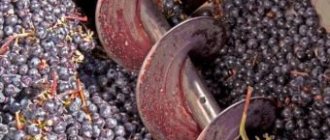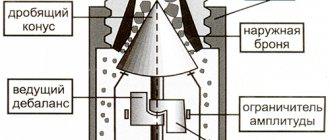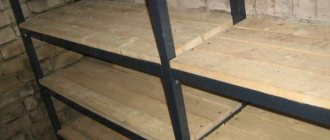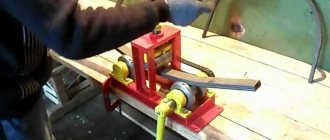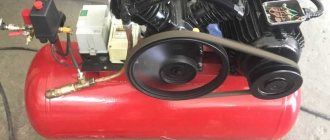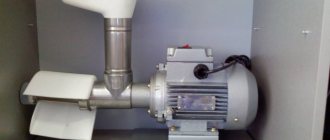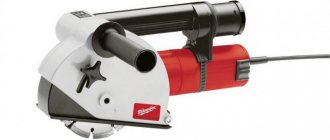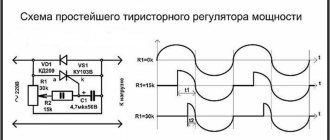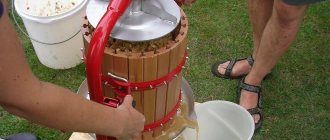For thousands of years, wine has not lost popularity due to its unique taste and aroma. In the recent past, exclusively manual labor was used to make wine. Huge plantations required large human resources. Grape juice was pressed with hands or feet, which took a lot of time and effort. Industrial progress has made this task much easier. Manual labor was replaced by machines, making the process of preparing the drink easier and significantly faster. Grape crushers began to be used to squeeze out juice.
A grape crusher is a device that processes grape bunches to produce pulp. It is used for processing large volumes of wine material. This saves time and makes the wine material better quality, since the grape seeds are not damaged during processing, and the finished wine will not have a specific bitter taste. There are mechanical and electric presses. The choice between them depends on the amount of material being processed. To process raw materials less than 700 kg, a manual model is used, and above this weight, an electric model is used. For small volumes of berries, you can make a grape crusher with your own hands.
A manual crusher is a wooden structure consisting of rollers, a frame and a wort container. The crusher works as a berry crusher by grinding the bunches with special rotating rollers.
Grape crusher: how to make it yourself from scrap materials
A grape crusher is an indispensable tool for a winegrower. It allows you to quickly and efficiently chop the berries and separate them from the ridges. With this method, the grape seeds are practically not damaged. This is very important because they contain tannins that significantly worsen the taste of the future wine. Making a homemade grape crusher is not difficult, and you can use a variety of materials for this.
- Grape crusher - why is it needed?
- Shaft crusher - step-by-step manufacturing instructions
- Option for the lazy
Kinds
The grape crusher has several classifications:
- Purchased design or homemade. The second option allows you to significantly save money by making the unit from improvised means.
- Depending on the material of manufacture, there are wooden, plastic, stainless steel, and combined (combining several types of materials).
- According to the principle of operation: screw presses, mechanisms with rollers, centrifugal, with a destemming system.
- Mechanical and electrically driven.
- With and without destemmer.
As you can see, the models can be very different. It all depends on the availability of available means and the type of grapevine.
Grape scallop tincture
This recipe for grape tincture appeared in Soviet times, when the people were subordinate to the party. The founder of anti-hangover products was Leonid Brezhnev, but his “brainchild” never appeared in stores. However, the technology has survived and taken root among those who like to make homemade alcohol.
Components:
- Dry ground grape scallops - 6 tsp.
- Alcohol base (alcohol 45%, moonshine or vodka) – 1 l.
- Glucose or fructose - half a teaspoon.
The recipe for making an anti-hangover tincture using grape scallops is the simplest:
- The dry ingredient is poured with alcoholic beverage and kept for 1 week. Shake the container daily.
- The composition is drained through a filter and a little glucose is added (can be replaced with fructose or sugar syrup).
- The product is infused for 2–3 days, then tasted.
The color of this tincture resembles cognac, and the taste is similar to chacha.
Purpose and principle of operation
A grape crusher is a device with a simple mechanism designed for processing berries. The design consists of a loading hopper, a container for collecting cake and two parallel crushing rollers. Grape crushers are used both in wine production on an industrial scale and in home winemaking.
The grapes intended for processing are poured into the loading hopper and crushed using crushing rollers driven by motion. The drive can be mechanical or electrical. Processed raw materials are discharged from a pulp collection container.
An important feature of a grape crusher is the presence of a gap between the crushing rollers. This allows you to leave grape seeds intact, which in a crushed state affect the taste of the finished product. The tannins contained in the seeds give bitterness to the wine.
2) Choppers powered by a drill (apple choppers made from a drill)
1 - Apple crusher from a bucket
The design of such a chopper is a plastic bucket, on the lid of which there is a centering sleeve for the knife. The apples are poured into the bucket, the bucket is closed with a lid with a knife inserted, and the lid is fixed. Then the knife is clamped in the puncher chuck and the apples are chopped in a few minutes using the reciprocating movements of the rotating knife. This chopper is very versatile, as it is suitable for any fruit, vegetables, grapes and apples.
Also, due to the fact that the design of the shredder does not contain an engine, it is very cheap. The price of such an apple chopper, powered by a drill, is only 69 €.
You can buy a grinder for apples and grapes powered by a drill in our online store.
2 — Apple crusher with a chopping cylinder in a wooden or stainless steel body
Usually, the cylinder is a wooden cylinder with screws screwed into it so that the heads of the screws protrude by 7-8mm.
Making a crusher with your own hands
A simple, but quite technologically advanced grape crusher is quite easy to make with your own hands. When making small volumes of homemade wine, there is no point in purchasing a factory design, which, by the way, is quite expensive. Making such a unit yourself will take a little time, and in terms of efficiency it will be almost as effective as devices sold in stores.
Instructions for making a crusher:
- The body can be made from any material, the most preferable option being high-quality oak boards.
- Making a drum, or beater shaft, from a pipe and equipping it with stainless steel blades 1.5 mm thick
- Manufacturing bearings in the form of plastic bushings with longitudinal slots, which will allow you to change the size of the gap between the drum and the deck.
- Installation of the drum using a metal rod with a diameter of 1.4 cm on bearings in the form of plastic bushings for sliding.
- Installation of a concave or deck under the beater shaft, the dimensions of which depend on the size of the berries. Most often, a grid on the deck with a cell of 7.5 x 14 mm for small berries and 12.5 x 25 mm for large grapes is used.
- Installation of a handle with which the beater shaft on bearings will be driven.
The manufactured manual crusher is installed on a container for collecting pulp. Almost any container can be used as a pulp receptacle, but preference should be given to barrels or tanks made of food-grade plastic or stainless steel.
Advantages of using the device
Advantages of producing pulp with an automatic crusher:
- fast processing of large volumes of grapes;
- rational use of resources;
- the opportunity to obtain high-quality pulp;
- automatic cleaning of cake, juice from twigs, excess ridges;
- simplicity and convenience of the unit, which can be improved if necessary;
Devices made of wood and stainless steel are popular. They are not subject to oxidation and corrosion. This ensures long-lasting use as the juice is highly acidic.
The only drawback is the inability to use certain types of units for processing nutmeg varieties.
Advantages of using crushers
A grape crusher is a useful and practical unit for those involved in winemaking. Using such a device in wine production has a number of advantages:
- reduction in technological loss of pulp by several times;
- absence of saturation of the pulp with components undesirable for the final product;
- saving time and effort;
- obtaining higher quality pulp;
- the design of the unit is simple, reliable and very durable;
- a manual or mechanical crusher can be used in the absence of electricity;
- The high-quality stainless steel crusher is reliably protected from corrosion and does not impart any foreign odors to the grape juice.
It should be remembered that crushers equipped with destemmers are not used when processing Muscat grapes.
Advantages and disadvantages
Homemade grape crushers have a number of advantages:
- Speed. This is especially true for electrical devices with comb separators.
- Quality. The pulp obtained in this way has the best characteristics. This makes straining easier in the future.
- Hygiene. Unlike crushers, manual and foot methods of processing grapes are not highly clean.
- Compactness. Such devices do not take up much space.
- Easy to care for. The components are easy to disassemble and wash.
- Price. In the household of a thrifty man there will always be components for such units, and accordingly, the cost of such devices is minimal. And at the same time, unnecessary, old things find a second life.
As you can see, grape crushers have a large list of advantages.
And if we remember that the Russian people have always been easy on invention and ingenuity, then turning an old washing machine into a device for extracting grape juice will not be difficult even for a novice engineer. And if you make this equipment with adjustable mechanisms, then it will be possible to obtain not only grape juice, but also apple, pear and others. Such opportunities will allow you to increase the range and quantity of homemade products.
Step-by-step instruction
All the necessary materials have been purchased and prepared, a set of tools is at hand - you can get to work. Don't forget to take the drawing you made earlier, which will be easier to navigate. So let's get started:
- We make a loading hopper from oak boards, which is shaped like an inverted truncated pyramid.
- We take a roller and draw 6 longitudinal lines on it. Along the length of each line we drill holes with a diameter of 10 mm and a depth of 50 mm. The distances between the holes should be about 50 mm. We repeat a similar procedure with the second roller.
- We make a wooden frame from the beams, in the center of which we attach the rollers. Don't forget to leave a gap of 2-3 mm between the rollers.
- On the outside of the frame we install the gears on the gear shafts.
- We assemble the entire structure. On the reservoir for collecting pulp we fix a frame with rollers, on which we install a loading hopper on top.
- We attach a handle to one of the axes of the rollers, which will operate our device.
The most primitive crusher for processing grape harvest is ready for use.
Required materials and tools
The success of any business depends on the degree of preparation of the “master”. Before you start making a homemade crushing unit, you need to find drawings of such a device on the Internet or draw yourself.
The next stage is preparing the necessary tools and materials. It is best to take a complete set of tools so that you don’t waste time looking for a hammer or screwdriver.
So, what materials do we need to make a crusher? Based on the notes of those winemakers who have already made similar devices with their own hands, we need to prepare:
- oak boards for the loading hopper (you can also use plastic or stainless steel);
- rollers – 2 pcs.;
- gears of the same size - 2 pcs.;
- beams with a section of 50x50 mm for a wooden frame;
- lever;
- pulp reservoir.
Step-by-step manufacturing instructions
Design development
You can make a crusher yourself
To make a grape crusher with your own hands, you need to develop a sketch or drawing of the future product.
Of all the variety of designs, the easiest to make is a roller device: it actively crushes the bunches.
In advanced designs, the distance between the rollers is adjustable.
Bunker
Crushers must have a hopper for 10-20 kg of grape mass. For manufacturing you will have to use plastic, wooden panels or stainless steel sheets.
The hopper has a wide part at the top and narrows at the bottom: this shape makes it possible to compress the product directed to the active working element.
Drive unit
A small homemade grape crusher is equipped with a handle: its axis is a continuation of one of the rollers.
Large-scale processing requires an electric drive. However, it should be taken into account that the shaft rotation speed should be no more than 3-4 rpm. A gear motor with a speed of 180-240 rpm is used. A power of about 1-2 kW will be required.
Container for berries
A homemade press can be tabletop, or it can be located on its own frame.
The container for the pulp is placed under the product. Plastic buckets are used for food products; they make it easier to transfer the semi-finished product into the fermentation container.
Manufacturing of elements
Wooden rollers are installed inside. Dough rolling pins made of birch or linden are used as a base.
For the protrusions of the grape crusher, slats (beads) are used.
- The length of the rolling pins is measured.
- 6 glazing beads are sawn off (12 in total).
- The cylinders (rolling pins) are marked into 6 parts.
- Using copper or brass nails, parts of the glazing beads are nailed into place - the rollers are ready.
Bunker elements are cut out of plywood 4-6 mm thick. The fragments are fastened together with copper screws or nails. The finished parts are impregnated with hot drying oil or primer for exterior use (double coating).
For a homemade grape crusher and installation of rollers, closed bearings are selected, which are fixed on the outside of the hopper. Housings made of stainless steel or bronze are used.
Peculiarities
For processing red grape varieties, units without a destemmer are used. Such products require pulp. The features of the device are determined by the design and operating principle.
Most home-made devices grind berries using a pair of simple cylindrical rollers with a smooth or grooved surface. At home, it is not difficult to implement a reciprocating design.
Such units operate on the principle of a mortar, in which a metal or wooden piston is placed. It is advisable to equip grinding devices with an electric motor.
A do-it-yourself grape crusher can be made with an electric motor.
Working with a mechanical device of such a technical modification requires significant muscle effort and is characterized by low productivity. The peculiarity of the hammer crusher is the presence of peripheral axes located parallel to the central shaft to which they are attached.
This design ensures the highest quality extraction of berries. The raw material enters a perforated deck, which rotates under the influence of centrifugal force. When making a crusher of this type with your own hands, it requires precise calculations. Otherwise, the device for crushing grapes will not fulfill its intended purpose. The peculiarity of screw units is that they crush berries using the compression method.
Grape crusher (video)
Crushers with and without destemmer
Grape combs can give wine the astringency and richness characteristic of quality drinks. However, their excess amount very often causes the drink to taste bitter or unpleasant, and also negatively affects its color and transparency. And if, when making red wines, it is allowed not to remove the grape stems, then for white wines such a procedure is mandatory.
There are two main types of destemming crushers used for grape processing.
Roller crushers-comb separators
Such a unit best meets the requirements of the technology for preparing raw materials for wine and allows you to obtain high-quality must. Our country has launched the production of such crushers. The operating principle is based on the operation of rollers and a destemmer. A pair or more horizontal rollers are cylindrical in shape and rotate in opposite directions. The size of the gap between the rollers is regulated by a special device. Rolls have a grooved, smooth or bladed surface and can be four-, six- or eight-bladed. Preferably profile rolls are used.
Centrifugal impact crushers-stemmers
Centrifugal crushers, or CDGs, can be either vertical or horizontal. The process of crushing grapes occurs as a result of impacts of a rotor rotating at speeds of up to 500 rpm. The use of this type of crusher-stemmer is characterized by the most complete yield of wort with an increased amount of coloring and phenolic substances. As a rule, CDG is used in the production of wine from red grapes.
Mechanical and electric crushers
The operating principle of a standard electric crusher has minor differences from the operation of a mechanical apparatus. A special feature is the presence of a special comb separator, which is a horizontal cylinder with a shaft and helical blades. Such elements allow you to quickly and efficiently separate grapes from the ridges. As a result of the translational movement of the screw blades, the ridges are pushed outward. Only juice and clean grapes enter the crushing container.
Pressers and crushers
A grape press or crusher is a relatively simple device that helps extract juice and pulp from berries.
In particular, it is praised for its ease of use and maintenance and good performance - meaning it would be an excellent choice for private use or maybe even a small business.
The only disadvantage is the small number of control and adjustment options.
Materials
The most popular material options here are:
- steel-stainless steel;
- plastic;
- varnished wood.
Without considering in more detail the pros and cons of other options, as it is unnecessary, we will immediately highlight that in most cases, stainless steel is the best. In this case, the components are easier to wash and disassemble. Longer service life, less odors.
destemmer
The second is the presence of a comb separator. Raw materials must be cleaned of ridges. Because the ridges ripen much earlier than the berries and they contain much more tannins, which results in excess bitterness.
Therefore, the use of a comb separator is often justified - a device made of helical blades and a shaft. The raw material first hits the shaft, then onto the pressing elements.
Expert opinion Yury Borisovich Kislyar, 61 years old, Voronezh, has been growing grapes for 15 years
For some red varieties, such as Cabernet Sauvignon and Merlot, the destemmer is not used because the quality of the raw material deteriorates.
Control
The advantages of mechanical/manual ones are compactness and cost-effectiveness. If you crush some grapes at home or on your personal farm, then these are the ones worth recommending. A simple attache includes something like the following:
- square bin;
- 2 smooth rollers;
- lower wooden frame;
- gear system;
- handle on the side.
Thanks to its light weight, it can easily be placed even on a table. But electric crushers make it possible to almost completely automate the process. As a rule, they even have an additional destemmer.
Full automation of the process makes it possible to greatly reduce the time and effort spent on work. Various models of electric crushers have the following performance:
- 1200-1500 kilos of grapes per hour;
- 1500-2000 kilos of grapes per hour;
- 2000-2300 or more kilos of grapes per hour.
Pros and cons of using
- large volumes are processed quickly;
- all resources are used as wisely as possible;
- the resulting pulp is of excellent quality;
- The cake is automatically cleaned;
- it is easy to control the process.
- some variants of Atregata are not suitable for Muscat varieties;
- the price may seem expensive to some (although the quality more than justifies it).
It should be noted that with minimal skills, it is quite possible not to buy a crusher ready-made in a store, but to make it yourself (but this, of course, is already associated with certain risks and is a topic for a separate article. By default, we recommend purchasing the product).
Shaft crusher - step-by-step manufacturing instructions
A device of this type is most preferable for self-production. For this you will need:
- Oak bars 50x50 for making the frame.
- Oak boards, plywood, sheet iron or plastic for making a bunker.
- Wooden rollers - 2 pcs.
- Gears, identical in size - 2 pcs.
- Lever.
- Tank for collecting pulp.
First you need to assemble a frame from oak bars into which the rollers will be installed. The length of the frame depends on the diameter of the pulp collection tank on which such a pulper will be installed. The width of the inside of the frame should be slightly larger than the length of the bolsters.
Wooden ribbed rollers are attached inside the frame at a distance of 2–3 mm from each other, the shape of which is shown in the drawing above. Gears are installed on their axles outside. You can make rollers yourself from round-shaped blanks, such as rolling pins. One option is to use old rollers for spinning clothes from an activator-type washing machine. They need to drill six rows of holes with a diameter of 10 mm to a depth of 5 mm.
A handle is attached to one of the shafts, which sets the rollers in motion. Then a receiving hopper is installed on top. It can be made from any materials. It is made in the form of an inverse truncated pyramid. Now all that remains is to install the crusher on the pulp collection container. You need to rotate the handle in such a way that the rollers rotate towards each other, pulling the berries into the space between them and pressing them like a press.
After the homemade crushing apparatus has been assembled and tested, you can begin to improve it. For example, equip the shafts with an electric drive. To do this, you need to install a pulley instead of a handle, and use an electric motor with a belt drive to rotate it. You can connect a drill or screwdriver as a motor.
To separate the ridges, you can install an additional device called a comb separator. It is a mesh that is installed on top of the rollers. A screw mechanism is mounted above it, which is activated by rotating the roller drive handle.
The blades of this device constantly mix the mass of grapes, the berries are separated from the ridges, fall through the mesh and then fall onto the crusher shafts. You can make such a device with your own hands from stainless steel.
After each use, the crusher must be washed thoroughly to prevent mold.
How to make a crusher with your own hands
It’s quite possible to assemble a very technologically advanced, yet simple grape crusher yourself. The costs of its production are minimal, and in terms of efficiency it is not inferior to factory products intended for processing small volumes of raw materials.
Installation stages
1. Knock down a frame from boards. It is preferable to use oak blanks. This element is shaped like two long boards connected to each other by two short transverse elements. The parameters are determined depending on the size of the rolls and hopper, which are subsequently installed on the frame.
2. Prepare the windrows. You can take them from an old washing machine (an element for spinning clothes) or make them yourself from wood, giving the surface relief. A pipe will also work. To make a relief on the surface, you need to draw several lines diagonally or along the end sides of the roll. Using the marks, holes or notches are made every 5 mm, 5 mm deep and 10 mm in diameter.
3. Make a bunker from the boards into which the berries will be immersed. The parameters of the lower part must correspond to the cavity on the frame, and the upper part expands for convenient loading of raw materials.
4. For counter rotation of the rolls, 2 gears should be prepared. They must have the same parameters.
5. Install the rollers using metal pins, securing them to the axis in the center of the frame. The interval between the surfaces of the working elements is 2-3 mm. Fix the gear system from the outside.
6. Select any container that will serve as a container for collecting pulp. The parameters of its upper part must correspond to the cavity of the frame.
7. Assemble the structure by installing a frame with rollers and a hopper on the container. Screw a handle onto one of the roller axes, with the help of which the mechanism will come into operation.
Based on this crusher, it is possible to make equipment with an electric drive. All you need additionally is a motor, a shaft and a transmission belt.
Second creation method: “Typhoon”
The operating principle of this grass cutter is no different from the previous one. It just looks better and the quality of work is higher. In this case, the raw material passes through the upper hole, and the finished substrate exits through the lower one, which is located in the side of the apparatus.
To avoid negative consequences, you should use a protective casing. This homemade crusher does not look ideal, but you will get it for free. Typically, the chopped grass is placed in a bucket, which is placed under the outlet. The body of the old Typhoon vacuum cleaner is perfect for a garden grass shredder. It has a top hole with the right size. Remember, this is a great option, but not the only one! Any cylindrical container is suitable, be it a pan, bucket or a piece of pipe. The engine can be obtained from an old washing machine.
We also recommend reading:
Knives can be made from an old hacksaw blade, and a rectangular profile can be used as stands. The bushing on which the knives are mounted must be turned on a lathe. The engine with the parts removed is mounted on studs from below to the container. To clamp the knives, you need to use plumbing nuts. When creating bushings, first cut threads for these nuts.
Then make a hole for the motor shaft. For better fixation on the shaft, two holes of 7 mm in diameter with threads for locking bolts are made in the bushing. On the other side of the motor shaft, platforms are created to increase the fixation of the bushing with special bolts. The next step is to remove the edges and put on the knives. To make knives correctly, you need to make four pieces of canvas using a grinder. Square holes with a side of 26 mm are created in the center of each workpiece.
The width of any part depends on the source material. Knives should be placed closer to the bottom. The platform must be reliable and stable. To do this, the base should be made larger than the top. The platform holds the chopper and protects the engine. It needs to be attached to the container with 3 bolts m6x45. The edges on the sides are covered with sheets of tin. In the racks it is worth cutting threads for M3 bolts, with which the sheets are secured to the platform.
Press
This manual grape crusher is simple and low cost. The device will require a stainless steel container with a tap, oak planks, a stainless steel strip (you can use a perforated one), a car jack, and a welded frame. To begin with, the inner container is assembled from oak planks. Holes are drilled at the ends of the bars at and below, fishing line and stainless wire are threaded through. This creates the frame of the future internal container. Its height must match the height of the stainless steel tank. Next, using a strip, the resulting structure is fastened together. A gap of 2-3 mm should be left between the bars. The next step is to make a wooden support for the press. It is also made from wooden blocks.
Its diameter should be slightly smaller than the diameter of the inner wooden container. A metal container is fixed to the frame, the internal wooden part is installed in it, grapes are poured in, and a support is placed under the press. As a force, you can use a screw system or a car jack. The second option is more affordable and is available to every car owner. The jack is installed on a wooden cover so that in the future the upper part of the frame becomes the second point of support. It is also necessary to prepare several bars and planks. They may be needed when working with a jack. The tap opens and the juice starts squeezing out. Don’t forget to place a container under the stream for juice.
Why a grape crusher?
The use of manual and foot labor is not hygienic, and it is a long process.
If you use a blender or food processor, the wine filtration process will not be at a high level. That is, the final product will have an unpleasant sediment, which will spoil the taste of the drink. A grape crusher will allow you to filter the wine more finely. This means that the finished drink will have a beautiful color, taste and have a transparent consistency.
Installation of crusher with destemmer
This grape crusher has a ridge separation mechanism, which is mounted below the rollers. It is a semi-cylinder made of stainless mesh with 15x15 mm cells.
The shaft is made from birch cuttings. The blades are made from a plate 0.8-1.5 mm thick (stainless steel). They are attached to the shaft with copper or brass screws. Installed so that when rotating, movement occurs in the horizontal plane.
A half-cylinder is bent from a stainless mesh. The distance between the blades and the wall is left no more than 5 mm.
The crushed berries fall through the cells, and the ridges are moved for unloading.
Operating rules
Most often, wooden crushers and stainless steel units are used in everyday life. They are durable and do not corrode. These qualities ensure the quality of the wine material and the durability of the structure. Grape juice has high acidity, which can damage materials sensitive to it, as well as react with metal and spoil the taste of the wine. Some models of modern household presses do not have destemmers, which is their only drawback.
To determine how well the grape crusher does its job, you need to check it. To do this, after processing portions of wine material, the mass of processed pulp and the mass of ridges are weighed. The total amount is compared with the weight of the feedstock. In high-quality presses the difference should be no more than 1-2%. These are minimal losses.
The quality of the pulp is also checked. Whole berries should make up no more than 3% of the total pulp mass. If the percentage is higher, you need to reduce the gap between the rollers. Some specialists install a two-level roller system, which facilitates the double passage of raw materials through the extraction system.
The number of unseparated ridges included in the processed mass is also analyzed. There should be no more than 1% of the total mass of particles passing through the comb separator.
The unsatisfactory result of studies of the quality of crusher operation forces us to analyze all stages of the work process and correct its shortcomings to increase efficiency.
Instructions and drawings on how to do it yourself at home
To crush a small crop (up to 500 kilograms), it is enough to build a wooden crusher with your own hands according to the proposed drawing. Its production consists of the following stages:
- Knock down the bottom frame from the boards. Its parameters depend on the number of rollers and the size of the lower bunker.
- Prepare the rolls. They can be purchased at a ready-made parts store.
- Make a bunker for berries from the boards. It should expand from above for ease of loading raw materials.
- To rotate the rollers, 2 metal gears are needed.
- Install the rollers using metal pins. Secure on the outside with gears.
- Select a container for ready-made pulp and juice. The size of the upper part depends on the frame parameters.
After this, the final assembly begins. A support frame with rollers and an upper hopper are attached to the container with the mixture. A handle is attached to one of the roller axes. With its help, the crusher is set in motion. All parts are coated with colorless wood varnish. It must be non-toxic and safe.
In the future, the finished press can be upgraded by adding an electric drive. Additionally, you will need a belt and transmission shaft, and a suitable engine. From a manual form, this form turns into an electric one, which increases efficiency.
conclusions
A grape crusher is a unit designed for the production of juice and pomace. These are the ingredients for making homemade wine and other products.
Before purchasing a crusher, it is important to consider the following nuances:
- All options are divided into 2 main groups: mechanical and electrical. They have almost the same principle of operation.
- The basis is a container for cake, a frame with grinding elements, and an upper part in the form of a bell. A gap is made between the rollers, often adjustable. With its help, the seeds are not crushed, which increases the quality of the cake.
- The choice of model depends on the type and volume of raw materials. To process a small amount of berries (up to 500 kilograms), the simplest form is sufficient. For production on an industrial scale, an electric version will be needed. You will also have to purchase a grape press or make one yourself.
- There are options with and without the comb separation function.
- Allows you to obtain clean pulp without impurities, saving raw materials, time and effort.
- The simplest variety can be improved if necessary.
The simplest variety can be made with your own hands. A wooden form is the simplest manual option. If desired, it can be improved by adding additional elements.
Home winemaking is a complex, time-consuming, but at the same time interesting and exciting activity. Those who deal with large volumes of crops resort to using various devices to make their work easier and speed up the process. The material contains information about grape crushers (pressers).
Purpose and description of the device
In the modern world, where they try to automate all work, it is impractical to use primitive manufacturing methods. Crushers are used to prepare grape juice.
They are designed to crush berries and form a mixture for further distillation of wine. These devices are used for processing grapes both on an industrial scale and at home.
The chopper has a fairly simple but effective design. The simplest device consists of a loading hopper, at the bottom of which there are two parallel rollers. The hopper is mounted on a wooden frame, and the rollers rotate using a gear system and a handle.
Some designs may also have a container for chopped berries. Although you can use a wooden vat or plastic barrel.
How does a crusher work?
After harvesting, grapes must be processed as soon as possible. Berries are poured into the loading hopper. The grinding rollers are located at some distance. Thus, when the grapes fall between them, the berries are crushed, but the seeds remain intact.
Important! If the gap between the rollers is minimal, then there is a possibility of crushing the grape seed. In this case, the tannins contained in it will get into the juice or wine and give them bitterness and viscosity.
By turning the handle, the rollers begin to move. The gear system is designed in such a way that when it starts to move, the rollers rotate in different directions. Grape berries that fall between them are crushed.
Their skin bursts and the pulp and juice are released, and the rotation of the rollers pushes them into the pulp vat.
Types of grape presses
There are several design schemes and design options for such devices. For home or garden use, grape berry choppers are made of compact size and light weight.
The device must:
- easy to disassemble for washing and cleaning;
- be durable;
- have high safety during everyday use;
- differ in operational reliability.
The design diagram for self-implementation is selected based on the required performance of the device, simplicity of technical design, and various individual factors.
Mechanical modifications of grape presses suitable for making at home are shown in the table:
| Construction type | Technical features |
| Roller | The simplest device with cylindrical pressing elements arranged in parallel and rotating in one or opposite directions. |
| Reciprocating | The working design of the piston modification crushes a portion of grape raw materials and sends the resulting mass into a storage container or into a plastic barrel placed nearby. |
| With radial blades | The activator rotates inside the grape mass. The blades break the berries with radial impact, the juice from which flows into a receiving container located below. |
| Hammer | Such designs contain a metal, plastic or wooden shaft with a rotor element. Additional axes are installed on the periphery, to which impact hammers are attached. The crushed berries are pushed into a storage container. |
| Screw | Contain an element of the same name with a variable pitch. The device crushes the berries by crushing them. |
| Eccentric | The design consists of a pair of cylinders, one of which is inserted into the other. During the rotational movement, their surfaces come closer together, crushing the berries between them. |
A do-it-yourself grape crusher can be made with or without a destemmer. The design detail gives the berry raw material chopper a useful option. The comb separator allows you to obtain a mass that does not require further cleaning of branches.
The element can be of a centrifugal, shaking out or blade design. Each option has its own nuances and subtleties of manufacturing for a similar purpose. Below are the design diagrams of grape presses available for your own implementation.
The simplest roller modification
Widely distributed among farmers and gardeners. A roller grape press allows you to obtain high-quality raw materials in small volumes. The basis of a compact agricultural unit is horizontally mounted cylindrical elements or blades with a fixed or adjustable gap. To improve the quality of the finished product, a self-made device of this type is equipped with a built-in comb separator.
The simplest roller modification unit has a top loading. A pair of choppers rotate in different directions, mechanically affecting the berries. The crusher is set in motion by turning the handle located on the body. The electric version is equipped with a rotary gear drive. A distinctive feature of different designs is the shape of the working cylinders.
By configuration they are:
- corrugated;
- smooth;
- perforated;
- lobed.
The easiest to make yourself are the first 2 options. The blade modification contains 4, 6 or 8 berry breaking elements. The speed and productivity of the grape crusher depends on their quantity.
Impact centrifugal design
In this model, a special rotor is installed that crushes the berries with a dynamic load of calculated force of the appropriate direction. Such devices are used to obtain the maximum volume of coloring substances contained in grape berries.
Impact centrifugal crushers are only available with an electric drive and support vertical or horizontal loading, depending on the method of spatial orientation of the central shaft. The standard rotor speed is 190-250 rpm.
With destemmer
The part is a horizontal perforated cylindrical shaft with thread-like blades. The raw material intended for processing first comes into contact with the destemmer. After this, the crushed berries fall under the crushing structure, cleared of branches. The reverse design option is possible. First, the raw materials are crushed, then the ridges are separated.
Electrical
Allows you to fully automate the production of wort. Includes additional comb separator. The basis is made up of rotating helical-shaped metal blades or a rotor. They ensure the separation of grapes from the ridges. They are pushed outward by a translational movement, leaving only juice and extraction in the hopper for further production of wine from grapes.
Most of these crushers are equipped with ridge separators. When choosing, take into account the type of raw materials, as well as the finished product.
Performance of different models:
- 1200 – 1500 kilograms per hour;
- up to 2000 kilograms per hour;
- 2000 – 2300 kilograms per hour.
The meaning of ridge separation.
The application of this operation on a large scale began after a long and heated debate. The first advantage of destemming is that the volume of the grapes is reduced. The ridges make up only 3 to 7% of the mass, but 30% of the volume of the harvested grapes. Thus, fermentation of grapes without ridges will require a smaller volume of fermentation tanks; in the same way, the volume of pulp sent for pressing will be smaller. At the same time, it is well known that in the presence of ridges it is easier to press the pulp. In addition, the ridges change the composition of the wine. On the one hand, they contain water and a little sugar, on the other, their juice has low acidity and contains a lot of potassium. Finally, destemming increases acidity and, most importantly, increases the alcohol content of the wine; The comb affects the alcohol content by absorbing alcohol. In addition, the ridges have a beneficial effect on the progress of fermentation. Guyon also noted that, thanks to its wide surface and numerous irregularities, the ridge creates a supply of air, which further promotes the development of wine yeast and, consequently, a more complete fermentation of sugar. In the presence of ridges, fermentation is always faster and more complete. Rice. 4.1. The influence of the presence of ridges on the course of alcoholic fermentation (Ribero-Gayon and Ribero-Gayon, 1953): 1 - grapes with ridges; 2 - grapes after removing the ridges.
Therefore, the separation of the stems always complicates the process of making wine to one degree or another, while fermentation in the presence of clusters does not create any problems. Curves in Fig. 4.1 show the influence of ridges on the progress of fermentation. The experiment was carried out under very strict conditions: in both tanks the grapes were the same, with the only difference being that in one of them there were ridges, but in the other there were none. In table Figure 4.2 shows the influence of ridges on the composition of the resulting wines.
The influence of ridges on the composition of the resulting wines (Sudro, 1963) Table 4.2
| Indicators | Number of ridges added to the wort after destemming, % | |||
| 0 | 50 | 100 | 200 | |
| Alcohol content, % vol. | 13,2 | 12,8 | 12,7 | 12,6 |
| Total acidity, mEq/l | 86 | 82 | 78 | 72 |
| Volatile acidity, mEq/l | 11,4 | 10,0 | 11,4 | 12,0 |
| Total phenolic compounds (permanganate number) | 38 | 49 | 58 | 71 |
| Color intensity | 1,28 | 1,23 | 1,18 | 1,10 |
| shade | 0,51 | 0,55 | 0,57 | 0,58 |
Table 4.3 Effect of different parts of the bunch on phenolic compounds and color of wines (Ribero-Gayon and Milhe, 1970)
| Indicators | Juice | Juice+peel | Juice+peel+semeia | Juice + peel + + seeds + ridges |
| Color | ||||
| intensity | — | 1,81 | 1,40 | 1,17 |
| shade | — | 0,39 | 0,43 | 0,48 |
| Anthocyanins, g/l | — | 0,98 | 0,94 | 0,85 |
| Tannins, g/l | — | 1,75 | 2,55 | 3,25 |
| Total phenolic compounds (permanganate number) | 5 | 32,00 | 47,00 | 56,00 |
But one of the main consequences of destemming is a change in tannin content. In table 4.3 clarified the effect of pulp, skin, seeds and ridges on the composition of phenolic compounds in wine made from Malbec grapes upon contact with pulp for 10 days at 25°C. In this experiment, 54% of the wine's tannins were in the skins, 25% in the seeds, and 21% in the stems. But this composition may vary depending on the variety. Sudro (1963) indicates that the increase in the amount of phenolic compounds due to the presence of ridges during infusion on the pulp ranges from 20 to 80% depending on the nature of the grapes (in particular, on the characteristics of the variety), temperature and duration of contact of the must with the pulp. In table Table 4.4 shows the results of tannin extraction from Merlot grapes fermented at 25 and 18°C with infusion on the pulp for 18 days. In a similar experiment with the Cabernet Sauvignon variety, tannin in the ridges ranged from 7% of the total amount of tannins formed over 20 days of infusion to 33% over 4 days of maceration (Tables 4 and 5). When fermentation lasts for a long time, the extraction of tannins from the skins is significant and their amount in the ridges is smaller. Thanks to an experiment using a solution model (Ribero-Gayon and Milche, 1970), it was possible to explain the influence of ridges on the color of wines. The initial solution was a model solution (12% vol. alcohol, pH), in which anthocyanins and tannins were dissolved. Then the combs or an aqueous extract of the combs were added, diluting the same in all cases. The results of this experiment are given in table. 4.6. When adding comb extract, the color intensity increases because increasing the amount of tannins has a more significant effect than a small decrease in the concentration of anthocyanins. In the presence of ridges, a significant decrease in anthocyanins is not compensated by the addition of tannins and the color intensity decreases. Although no experiments have been carried out to this effect, it can be assumed that this weakening of color in the presence of ridges gradually disappears during aging, since tannins (more abundant in wines prepared in the presence of ridges) play a more significant role than anthocyanins in the color of older wines. wine
Table 4.4 Effect of fermentation temperature on tannin extraction from different parts of the bunch (Ribero-Gayon and Milche, 1970)
| Origin of tannin | Fermentation at temperature (in °C) | |
| 18 | 25 | |
| Wine tannin, % | ||
| from the skin | 36 | 45 |
| » seeds | 24 | 15 |
| » ridges | 40 | 30 |
Table 4.5 Effect of duration of contact with pulp on the extraction of phenolic compounds from ridges (Ribero-Gayon and Milche, 1970)
| Duration of contact with pulp | Color | Decrease in intensity, % | Anthocyanins, g/l | Reduction of anthocyanins,% | Taiiiiiiy, g/l | Tannins originating from ridges, % | |
| shade | intensity | ||||||
| 4 days | |||||||
| without ridges | 0,42 | 1,51 | — | 0,80 | — | 1,7 | — |
| with combs 20 days | 0,55 | 1,11 | 26 | 0,69 | 14 | 2,1 | 33 |
| without ridges | 0,55 | 1,39 | — | 0,80 | — | 4,2 | — |
| with ridges | 0,43 | 1,24 | 10 | 0,69 | 14 | 4,5 | 7 |
The influence of the ridges is also manifested in the change in color of red wines in the case of grapes with rot. For reasons that have not yet been specified, the oxidase cassette is clearly enhanced during ridge separation. Interference by the ridges can be hypothesized as a result of fixation of polyphenol oxidase (laccase) from the fungus Botrytis cinerea or inhibition of these enzymes by tannins. Table 4.6 Effect of ridges on phenolic compounds and color of synthetic media (Ribero-Gayon and Milche, 1970)
| Coloring | ||||
| Option | shade | intensity | Anthocyanins, g/l | Tannins, g/l |
| Control solution | 0,46 | 0,41 | ||
| in 1 day | — | — | ||
| " 17 days | 0,50 | 0,43 | 0,19 | 0,7 |
| Same solution + comb extract | 0,55 | 0,62 | ||
| in 1 day | — | — | ||
| " 17 days | 0,64 | 0,59 | 0,17 | 6,8 |
| Same solution + combs | 0,98 | 0,33 | ||
| in 1 day | — | — | ||
| " 17 days | 1,66 | 0,20 | 0,03 | 4,0 |
Enrichment in phenolic compounds, more significant in wines prepared in the presence of ridges, may in some cases be a quality factor, for example for grapes obtained from young plantings. However, it is well known that the components formed when the ridges are dissolved have astringent, grassy flavors that are often unpleasant. That is why decombing is now widespread, and in the Bordeaux region it has become common practice. In the Burgundy region, this practice has existed for a long time. Stemming ultimately results in velvety, finer wines that mature more quickly during storage in both barrel and bottle. However, Leglise (1967) believes that in the Burgundy region, complete destemming should now be abandoned and 20 to 30% of the original number of stems should be left when processing grapes. Indeed, modern conditions for cultivating grapes have led to increased yields, but have caused significant changes in the ratio between the solid parts and the liquid phase of the grapes. According to the author, wines prepared without ridges, as is done today, contain insufficient tannins. In conclusion, we can say that destemming is an operation that should be recommended whenever velvety and fine wines are desired. However, in some areas and especially for varieties with few woody ridges, such as Aramon, destemming does not improve quality. Likewise, in the case of young vineyards or significant harvests, the ridges add some coherence to the wines, particularly wines from vineyards in their third or fourth year. Finally, when the grapes are more than 30% rotten, processing them without destemming significantly prevents the occurrence of oxidase cass.
